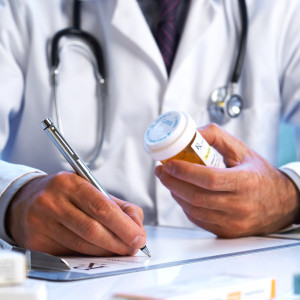Theft and counterfeiting are two of the most concerning issues threatening the pharmaceutical industry, with dangerous counterfeit drugs representing 10 percent to 30 percent of available drugs in developing countries. Additionally, estimates place the cost of pharmaceutical theft to shippers and transporters at $30 billion a year, with averages of $4 million per loss — a clear deficit that needs to be resolved.
The supply chain is continuing to expand geographically, as well as the number of companies involved in the chain itself, and pharmaceutical companies are relying on more and more partners for all stages of development — increasing the complexity of the supply chain. To add to this, the different components of the chain all use their own non-communicating systems (airlines, airports, freight forwarders, trucking agencies, third-party logistics, etc.) which is creating “dark matter” gaps in transparency at incremental points in the journey of a product to market.
These factors create a wide variety of opportunities for criminals, who can infiltrate the supply chain through a combination of intuitive methods. True counterfeiting, for example, is where pharma drugs are replaced with ingredients that are neither FDA approved nor contain any pharmaceutical ingredient — this can generate annual profit figures of $70 billion to $200 billion for these criminals. Other methods include drug re-labeling, drug contamination or drugs diverted from the intended supply chain destination to increase opportunities for theft.
These threats highlight an international need to address the persistent issue of traceability and transparency in product development and logistics. Claims of theft underreporting continue to place doubt in validity of reports, and supply chains are now more visible than ever through connected devices and communication frameworks.
The pharmaceutical industry continues to move at a dramatic pace, with the market driving the direction and demand of services to new areas not previously associated with the industry. Factors such as speed, flexibility of service delivery and choice of suppliers are maximizing opportunities for consumers, but also demanding new requirements of the supply chain and increasing the network of companies involved within it.
Besides factors such as speed of delivery, the persistent issue of theft and counterfeiting are contributing to a volatile and fluctuating marketplace — with a strong demand for manufacturers and transporters to have end-to-end oversight of the full supply chain and a responsive system for management.
The integration of legislation has certainly made a positive effect, with examples such as the FDA’s recent Drug Supply Chain Security Act improving the traceability of drugs within the supply ecosystem. This legislation has forced organizations to improve their detection and removal of potentially dangerous drugs from the drug supply chain to protect U.S. consumers.
This has made improvements in overall supply chain transparency, but it’s far from a full-proof deterrent for criminals to tamper with packages.
Accurately verifying and tracking products from production to delivery, as well as among partners in the chain, is the real key to reducing vulnerabilities across the supply chain. However, it has also been complex to execute in previous years — as integration and communication between differing logistics management systems and effective analytic technologies built into solutions from the outset has been lacking in realistic viability.
When considering the tracking of products, previous attempts to track packages have placed emphasis on radio frequency identification (RFID) tracking, giving identities to each package and allowing effective tracking and monitoring to occur throughout the journey of a package. While this does improve the validity of products, it is a very simplistic method of security, as RFID tags can remain while the contents of the package can still be tampered.
Solutions that combine other sensor data and can analyze aspects such as weight and temperature with package serialization data, take this concept forward and actually create a method of authentication not previously achievable through traditional techniques. To put this in perspective, costs incurred by the top 10 pharmaceutical companies due to temperature excursions alone reached roughly $16 billion in 2016, and pharma logistics handle $60 million saleable returns a year.
Today, new technology has been developed that can reduce the ability for product tampering throughout the supply chain by combining leading security, advanced data analytics and compliance technology in a single, unified platform. Specifically, new software allows for the integration of Hyperledger blockchain technology that can be used to secure and isolate trading partners’ data as well as establish trust between non-adjacent trading partners — not possible in traditional approaches to verification and transaction.
Any slight tampering with products in the supply chain, especially pharmaceutical products, has the capacity to result in catastrophic effects for patients and a clear negative commercial effect for the manufacturer of the products. It is critical the industry has the ability to understand and verify any changes in activity, location or package aesthetics, as this will dramatically reduce the capacity and incentive for detrimental hacking attempts to occur.
A holistic and proactive capability must be encouraged, one that will enable the manufacturer to view and manage all aspects of the supply chain, while ensuring the security and authentication of a pharmaceutical product throughout its life cycle.

